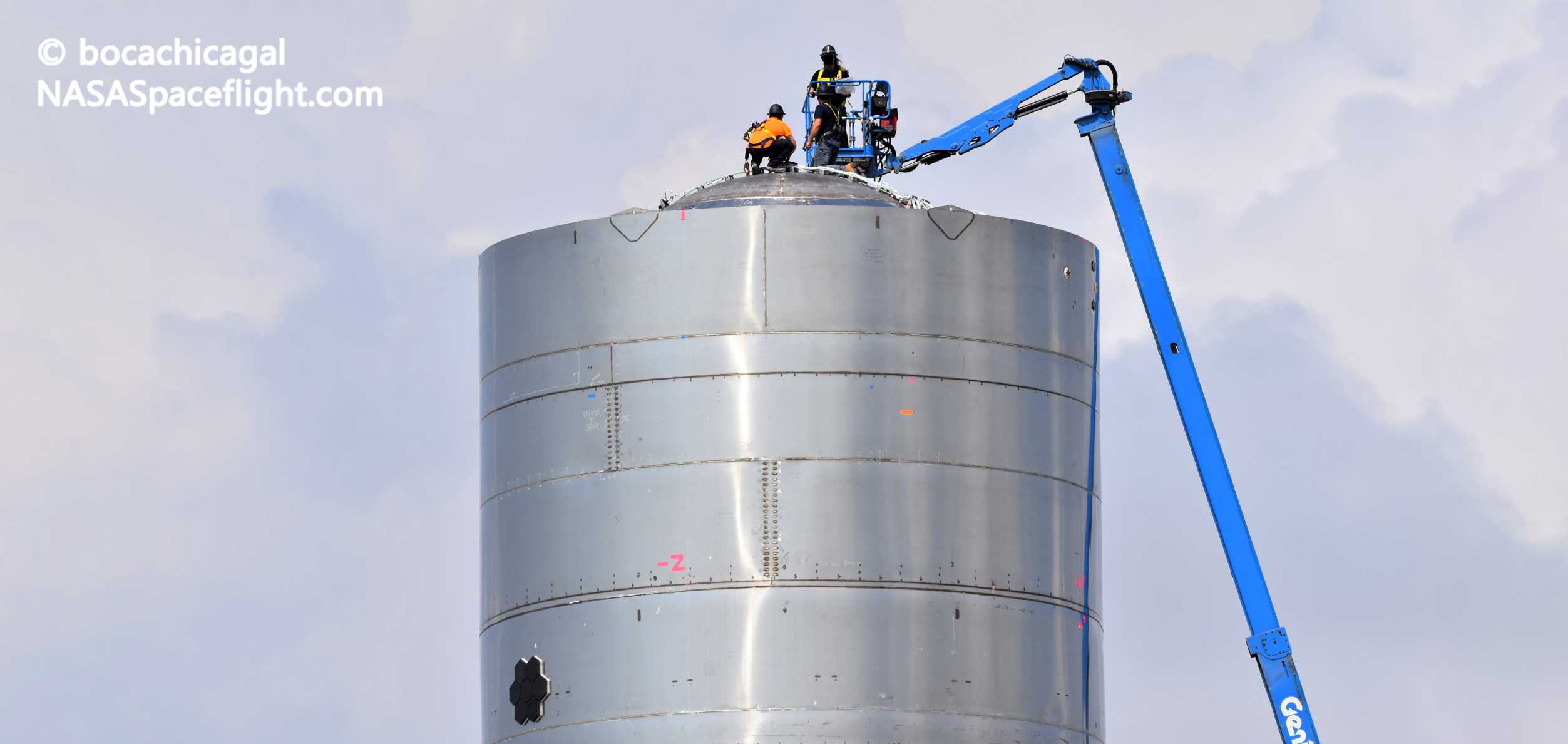
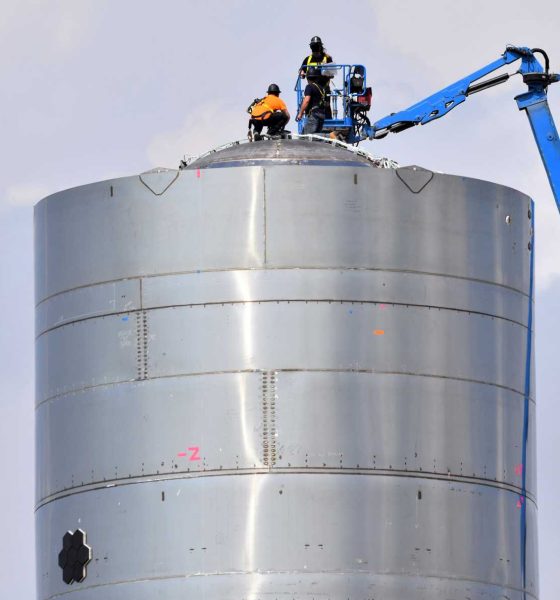
News
SpaceX fires up Starship rocket twice in 30 hours ahead of next big tests
SpaceX has successfully fired up a full-scale Starship rocket for the second time in barely 30 hours and removed the ship’s Raptor engine to perform an additional suite of “cryo testing”.
Around 7pm CDT on May 6th, SpaceX technicians began loading the fourth full-scale Starship with liquid oxygen and methane, filling up a large portion of its massive propellant tanks. Just the latest in a line of several tests involving wet dress rehearsals (WDR) completed in the days prior, this test would soon become exceptional. About an hour and a half after work began, Starship SN4’s lone Raptor engine ignited and burned for ~3 seconds, marking the first time in history a next-generation SpaceX rocket truly came alive with one of the engines designed to take it all the way to orbit.
In line with tests performed with Starhopper – a low-fidelity, subscale tested that flew twice with Raptor – last year, it would have been business as usual if SpaceX had called it a day and moved on to something else with Starship SN4. Instead, Starship performed another WDR and fired up its Raptor engine for a second time in just 30 hours after SpaceX teams inspected the rocket and cleared it for another round. It’s unknown why two back-to-back static fires were performed but, to be clear, every step Starship SN4 takes forward is a step into uncharted territory. Already, the ship’s next steps could come as soon as Friday, May 8th.
According to CEO Elon Musk, SpaceX’s second Starship SN4 static fire test was completed successfully and actually marked the operational debut of a critical aspect of the next-generation launch vehicle and spacecraft. Known as header tanks, Starship needs two smaller secondary propellant tanks to complement its main tanks, a need driven mainly by the challenges of landing such a large and mobile spacecraft. Smaller header tanks will also make it dramatically easier for SpaceX to insulate cryogenic propellant and ensure it remains liquid over long-duration cruises in space, but safe and reliable landings are a more pressing concern for these early prototypes.
During landing operations, the main benefits smaller header tanks offer are relative ease of pressurization (needed to safely feed Raptor engines) and a much lower risk of issues from sloshing, which can introduce bubbles and voids that can obliterate rocket engines if ingested. Impressively, per Musk, Starship SN4 completed its second static fire test using its internal liquid methane header tank – a sort of bubble attached to the bottom of the main methane tank dome.
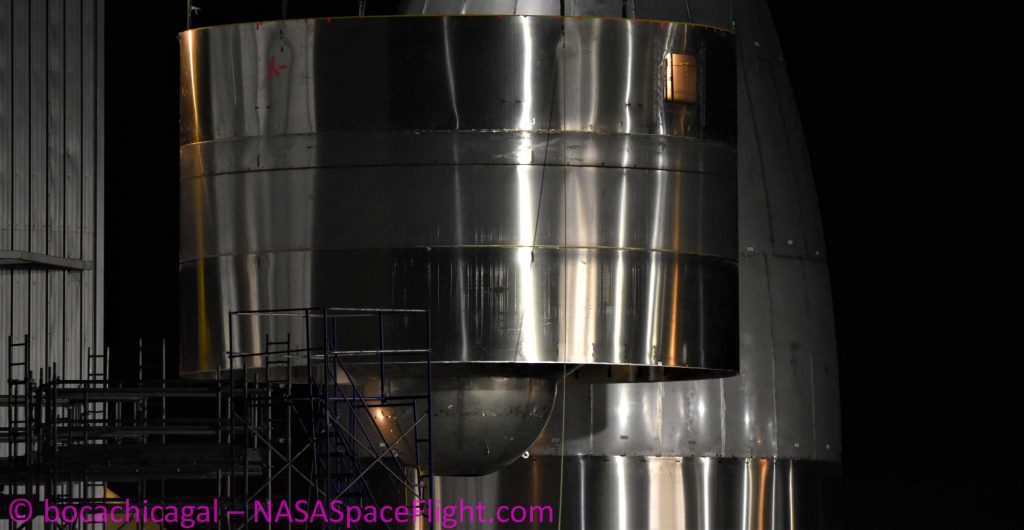
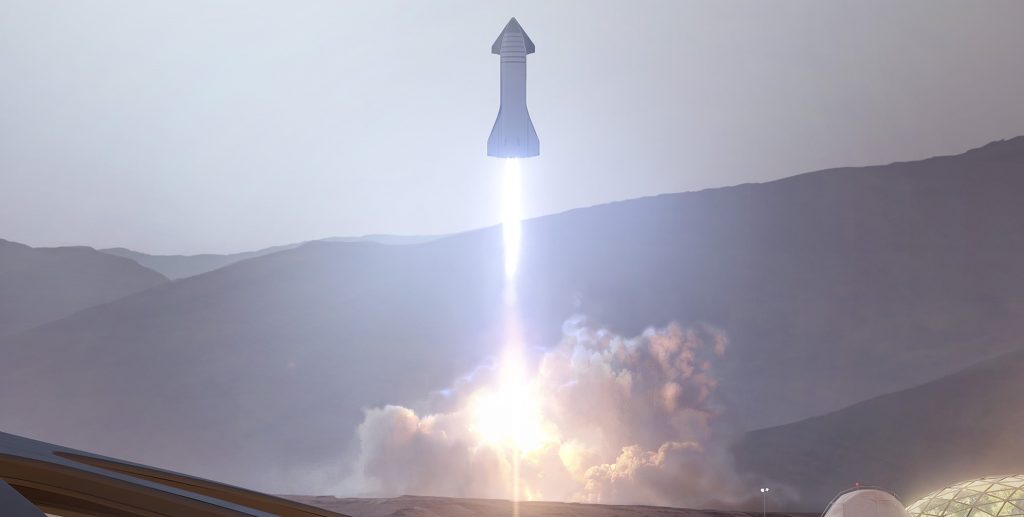
Starship’s liquid oxygen header tank is situated at the tip of the conical nose section, a part that all full-scale ships have been tested without thus far. However, the use of the fuel header tank on May 7th means that Starship SN4 already has a functional, plumbed header tank installed, verifying the partial functionality of a critical part of the next-generation launch vehicle. A second static fire will have also provided SpaceX a wealth of extra data about Raptor’s performance while installed on Starship, invaluable at such an early stage of integrated testing.
Two Starship static fires now under its belt, SpaceX removed SN4’s Raptor engine around 12 hours after its second test and returned it to storage at the company’s nearby factory facilities. According to public notices provided by Cameron County, Texas officials, SpaceX’s next Starship SN4 activity is expected to occur on May 8th with backup windows on the 9th and 10th and will involve “cryo testing”.
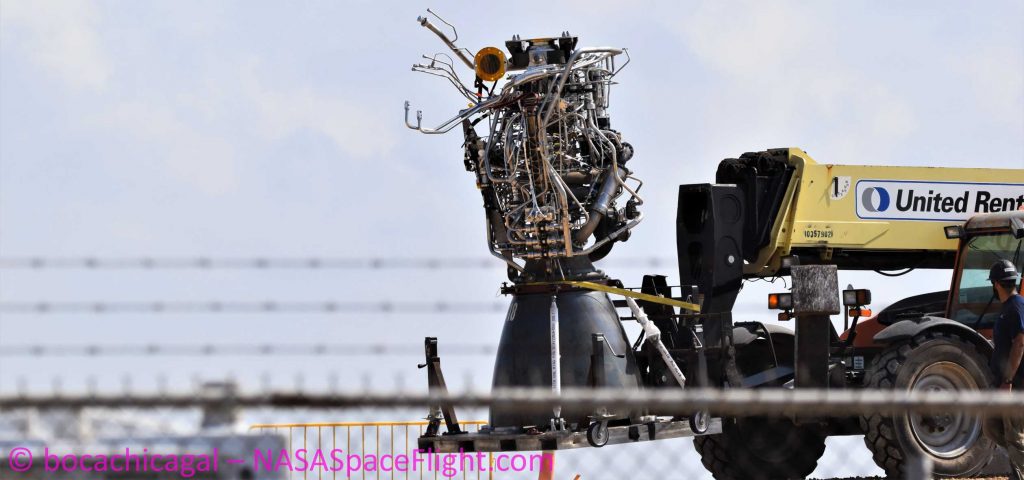
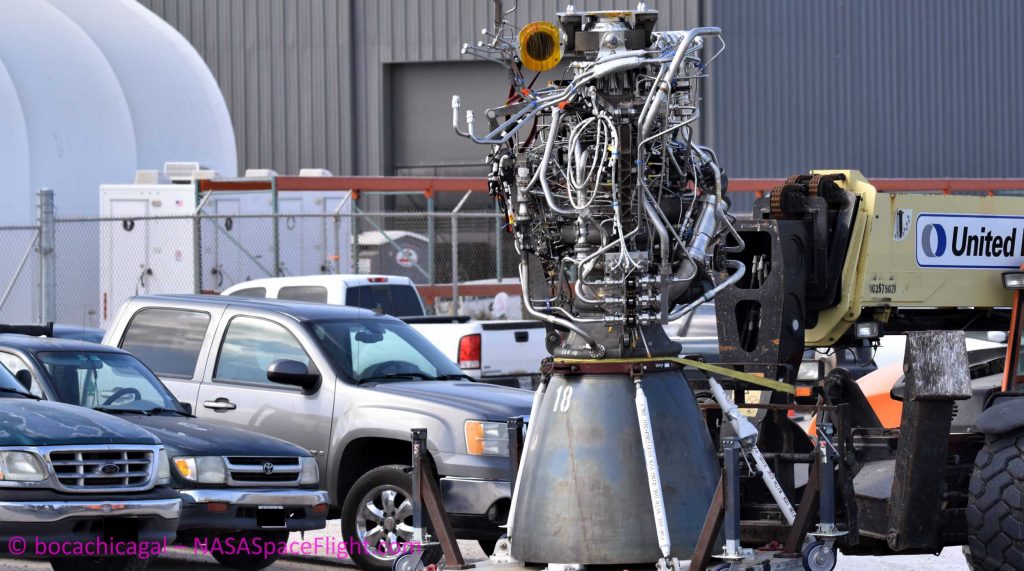
The most obvious conclusion is that SpaceX – having completed enough static fire testing to verify Starship SN4’s performance – now wants to really put the rocket through its paces with another cryogenic test. Completed on April 26th, the ship’s first cryogenic ‘proof’ test maxed out at around 4.9 bar (70 psi), enough for low-stress hop tests but well short of the sustained pressure needed for orbital spaceflight. While testing singular propellant tanks in the first few months of 2020, Musk revealed that SpaceX was targeting a minimum of 6 bar (~90 psi) for orbital Starship flights – ~8 bar (115 psi) with a 25% safety factor.
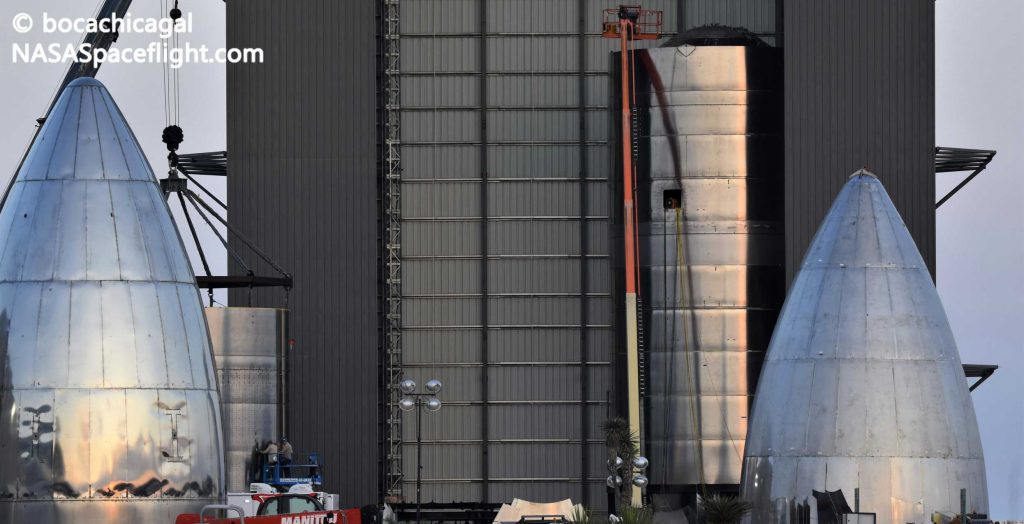
The company actually achieved 8.4 bar with one of its Starship test tanks, the same processes of which were used to build Starship SN4, but a full-scale ship has yet to demonstrate those pressures. Now, SpaceX already has a fifth full-scale prototype (Starship SN5) likely just a week or so away from pad readiness, meaning that Starship SN4’s potential destruction during pressure testing wouldn’t have a big impact on plans for a series of imminent flight tests. If SN4 survives pressure testing, it would likely have its Raptor engine reinstalled and move on to a 150m (500 ft) hop test.

News
Tesla FSD fleet is nearing 7 billion total miles, including 2.5 billion city miles
As can be seen on Tesla’s official FSD webpage, vehicles equipped with the system have now navigated over 6.99 billion miles.

Tesla’s Full Self-Driving (Supervised) fleet is closing in on almost 7 billion total miles driven, as per data posted by the company on its official FSD webpage.
These figures hint at the massive scale of data fueling Tesla’s rapid FSD improvements, which have been quite notable as of late.
FSD mileage milestones
As can be seen on Tesla’s official FSD webpage, vehicles equipped with the system have now navigated over 6.99 billion miles. Tesla owner and avid FSD tester Whole Mars Catalog also shared a screenshot indicating that from the nearly 7 billion miles traveled by the FSD fleet, more than 2.5 billion miles were driven inside cities.
City miles are particularly valuable for complex urban scenarios like unprotected turns, pedestrian interactions, and traffic lights. This is also the difference-maker for FSD, as only complex solutions, such as Waymo’s self-driving taxis, operate similarly on inner-city streets. And even then, incidents such as the San Francisco blackouts have proven challenging for sensor-rich vehicles like Waymos.
Tesla’s data edge
Tesla has a number of advantages in the autonomous vehicle sector, one of which is the size of its fleet and the number of vehicles training FSD on real-world roads. Tesla’s nearly 7 billion FSD miles then allow the company to roll out updates that make its vehicles behave like they are being driven by experienced drivers, even if they are operating on their own.
So notable are Tesla’s improvements to FSD that NVIDIA Director of Robotics Jim Fan, after experiencing FSD v14, noted that the system is the first AI that passes what he described as a “Physical Turing Test.”
“Despite knowing exactly how robot learning works, I still find it magical watching the steering wheel turn by itself. First it feels surreal, next it becomes routine. Then, like the smartphone, taking it away actively hurts. This is how humanity gets rewired and glued to god-like technologies,” Fan wrote in a post on X.
News
Tesla starts showing how FSD will change lives in Europe
Local officials tested the system on narrow country roads and were impressed by FSD’s smooth, human-like driving, with some calling the service a game-changer for everyday life in areas that are far from urban centers.

Tesla has launched Europe’s first public shuttle service using Full Self-Driving (Supervised) in the rural Eifelkreis Bitburg-Prüm region of Germany, demonstrating how the technology can restore independence and mobility for people who struggle with limited transport options.
Local officials tested the system on narrow country roads and were impressed by FSD’s smooth, human-like driving, with some calling the service a game-changer for everyday life in areas that are far from urban centers.
Officials see real impact on rural residents
Arzfeld Mayor Johannes Kuhl and District Administrator Andreas Kruppert personally tested the Tesla shuttle service. This allowed them to see just how well FSD navigated winding lanes and rural roads confidently. Kruppert said, “Autonomous driving sounds like science fiction to many, but we simply see here that it works totally well in rural regions too.” Kuhl, for his part, also noted that FSD “feels like a very experienced driver.”
The pilot complements the area’s “Citizen Bus” program, which provides on-demand rides for elderly residents who can no longer drive themselves. Tesla Europe shared a video of a demonstration of the service, highlighting how FSD gives people their freedom back, even in places where public transport is not as prevalent.
What the Ministry for Economic Affairs and Transport says
Rhineland-Palatinate’s Minister Daniela Schmitt supported the project, praising the collaboration that made this “first of its kind in Europe” possible. As per the ministry, the rural rollout for the service shows FSD’s potential beyond major cities, and it delivers tangible benefits like grocery runs, doctor visits, and social connections for isolated residents.
“Reliable and flexible mobility is especially vital in rural areas. With the launch of a shuttle service using self-driving vehicles (FSD supervised) by Tesla in the Eifelkreis Bitburg-Prüm, an innovative pilot project is now getting underway that complements local community bus services. It is the first project of its kind in Europe.
“The result is a real gain for rural mobility: greater accessibility, more flexibility and tangible benefits for everyday life. A strong signal for innovation, cooperation and future-oriented mobility beyond urban centers,” the ministry wrote in a LinkedIn post.
News
Tesla China quietly posts Robotaxi-related job listing
Tesla China is currently seeking a Low Voltage Electrical Engineer to work on circuit board design for the company’s autonomous vehicles.

Tesla has posted a new job listing in Shanghai explicitly tied to its Robotaxi program, fueling speculation that the company is preparing to launch its dedicated autonomous ride-hailing service in China.
As noted in the listing, Tesla China is currently seeking a Low Voltage Electrical Engineer to work on circuit board design for the company’s autonomous vehicles.
Robotaxi-specific role
The listing, which was shared on social media platform X by industry watcher @tslaming, suggested that Tesla China is looking to fill the role urgently. The job listing itself specifically mentions that the person hired for the role will be working on the Low Voltage Hardware team, which would design the circuit boards that would serve as the nervous system of the Robotaxi.
Key tasks for the role, as indicated in the job listing, include collaboration with PCB layout, firmware, mechanical, program management, and validation teams, among other responsibilities. The role is based in Shanghai.
China Robotaxi launch
China represents a massive potential market for robotaxis, with its dense urban centers and supportive policies in select cities. Tesla has limited permission to roll out FSD in the country, though despite this, its vehicles have been hailed as among the best in the market when it comes to autonomous features. So far, at least, it appears that China supports Tesla’s FSD and Robotaxi rollout.
This was hinted at in November, when Tesla brought the Cybercab to the 8th China International Import Expo (CIIE) in Shanghai, marking the first time that the autonomous two-seater was brought to the Asia-Pacific region. The vehicle, despite not having a release date in China, received a significant amount of interest among the event’s attendees.








